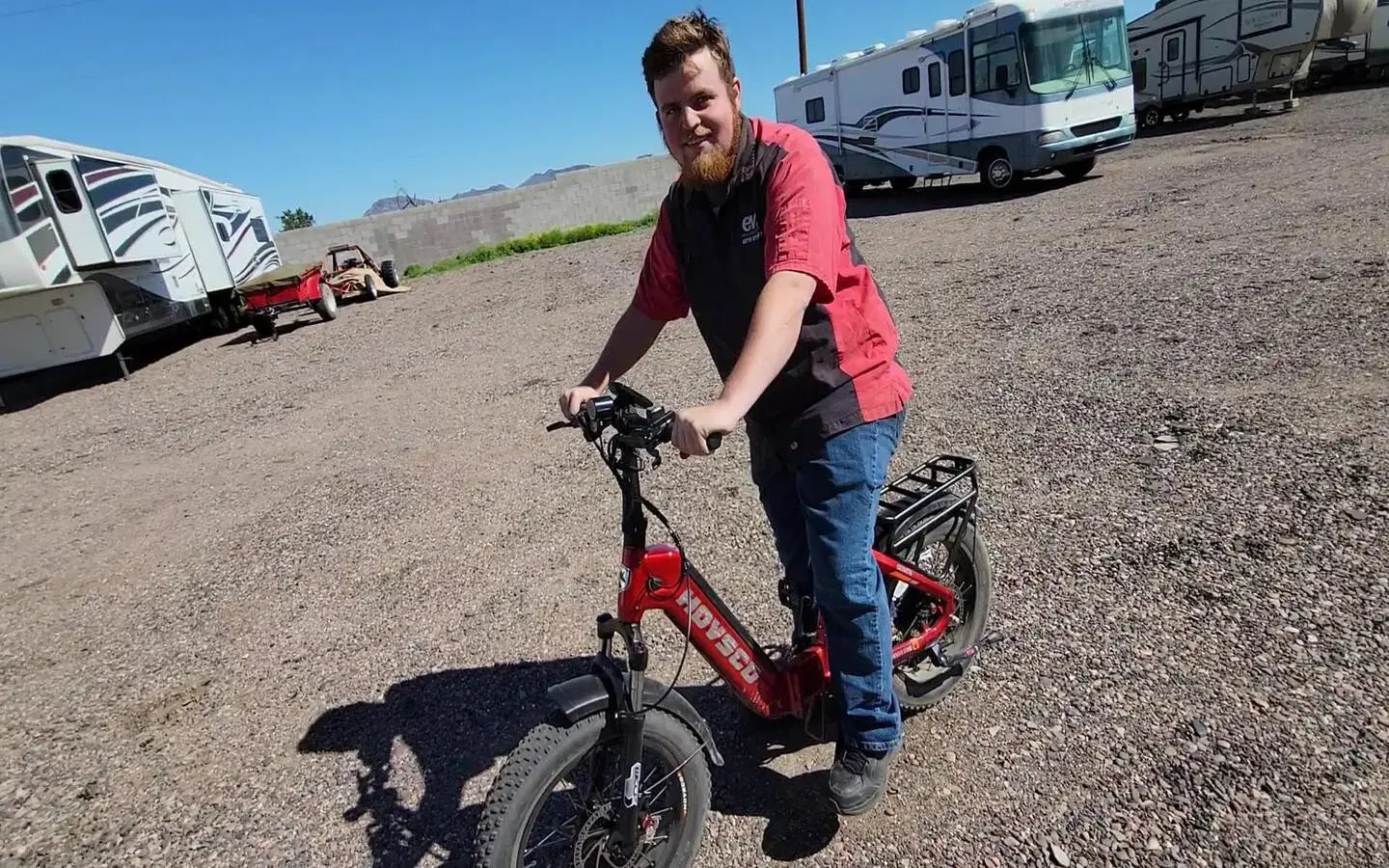
- by LiuJiazhu
Are Folding Electric Bicycles Practical For Urban Commuting?
- by LiuJiazhu
Folding electric bicycles are practical for urban commuting due to their portability, space efficiency, and adequate range for city distances. Top models like the Yadea F7 and Xiaomi Pro 2 offer 120 km and 35 km ranges respectively, with lightweight designs under 30 kg. While they require careful maintenance and cost more upfront, their ability to integrate with public transport and store compactly makes them ideal for crowded cities.
A superior folding e-bike combines lightweight durability (e.g., aircraft-grade aluminum frames), extended battery life (50-120 km ranges), and rapid folding mechanisms. For instance, the Yadea F7 uses a patented hinge system that locks in 3 seconds, while maintaining water resistance for rainy commutes.
Pro Tip: Always verify the folding joint's warranty — stress points like hinges determine long-term reliability. Consider the G-force model's military-grade locking mechanism, which withstands 200,000 folds without play. However, higher-end materials increase costs. Think of it like buying a Swiss Army knife: compactness demands precision engineering, which isn't cheap. But what happens if you prioritize affordability over build quality? Budget models often use basic steel joints that loosen within months, risking mid-ride collapses.
Urban riders need bikes under 30 kg for easy carrying up stairs or onto trains. The Xiaomi Pro 2 excels at 14.2 kg, while bulkier 35 kg models like the Phoenix Fold struggle in multi-modal transit scenarios.
Pro Tip: Calculate your "lift frequency" — if you'll carry the bike more than twice daily, prioritize magnesium alloy frames over steel. A 5 kg difference feels negligible initially but causes fatigue over weeks. Imagine hauling a 30 lb toddler versus a 20 lb backpack daily. The New SunDay D9 exemplifies this balance, using carbon fiber reinforcement in stress zones while keeping total weight at 24 kg.
| Model | Weight | Frame Material |
|---|---|---|
| Yadea F7 | 29 kg | Aluminum 6061 |
| Xiaomi Pro 2 | 14.2 kg | Magnesium Alloy |
Most city commutes require 20-40 km daily range. The Phoenix Fold's 80 km capacity suits delivery workers, while the Xiaomi Pro 2's 35 km range suffices for average users. Battery tech matters: LG cells in premium models lose only 15% capacity after 500 cycles vs. 30% in generic packs.
Pro Tip: Multiply your one-way commute distance by 1.4 to account for elevation changes and stop-and-go traffic. A 10 km commute likely needs a 14 km rated battery. The Ninebot Max G30LP demonstrates this with adaptive discharge rates that extend range during frequent acceleration.
Three dominant systems exist: single-joint vertical folds (Yadea F7, 3-step process), triangular horizontal folds (Xiaomi Pro 2, tool-free), and magnetic quick-release (G-force's patent-pending design). The latter enables 5-second folding but costs 30% more.
Pro Tip: Test fold/unfold cycles before buying — some mechanisms stiffen in cold weather. The New SunDay D9's lubricated joints operate smoothly at -10°C, crucial for northern cities. Consider it analogous to car doors: premium models use heated seals to prevent winter jamming.
| Mechanism Type | Folding Time | Durability (cycles) |
|---|---|---|
| Single-Joint | 8-12 sec | 10,000 |
| Magnetic | 5 sec | 50,000 |
Top-tier brands like Yadea and Xiaomi offer IP67 waterproofing and 3-year motor warranties, versus generic brands' 6-month coverage. The Yadea F7's brushless 350W motor lasts 10,000+ km, while budget motors often fail at 3,000 km.
Pro Tip: Compare component-level warranties — Yadea's separate coverage for batteries (2 years) and controllers (3 years) provides better long-term value. Think of it like buying a car: a Honda Civic's resale value stays high because parts are standardized and warrantied.
Critical maintenance includes biweekly hinge lubrication (use PTFE spray, not grease), monthly torque checks (18-20 Nm for folding joints), and battery terminal cleaning. The G-force's sealed joints require less frequent care but cost $120 per professional service.
Pro Tip: Create a maintenance calendar aligned with mileage — every 500 km for chain lubing, every 1,000 km for brake adjustments. The Xiaomi Pro 2's app tracks these automatically, sending reminders when service is due. Neglecting this is like skipping oil changes in a car: small savings now, major repairs later.
Models with 350W+ motors and torque sensors like the Yadea F7 climb 15° inclines comfortably. Avoid under-250W motors in hilly cities.
How often should folding joints be replaced?Premium mechanisms last 5-7 years with proper care. Inspect annually for play — 2mm+ lateral movement indicates replacement need.
Share:
Does Ebike Adoption Reduce Urban Transportation Emissions?
Which Commuter Ebikes Provide The Longest Battery Life?